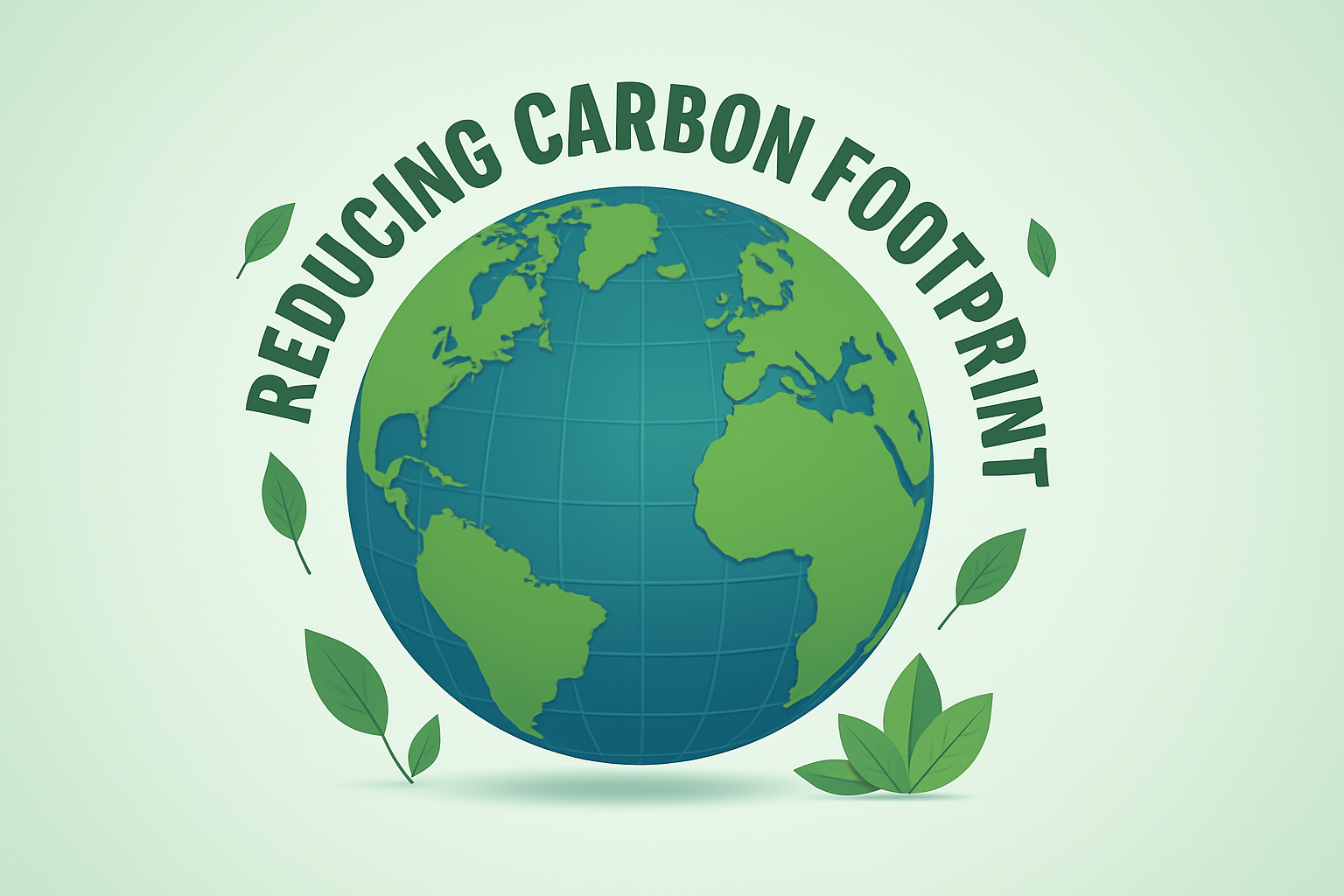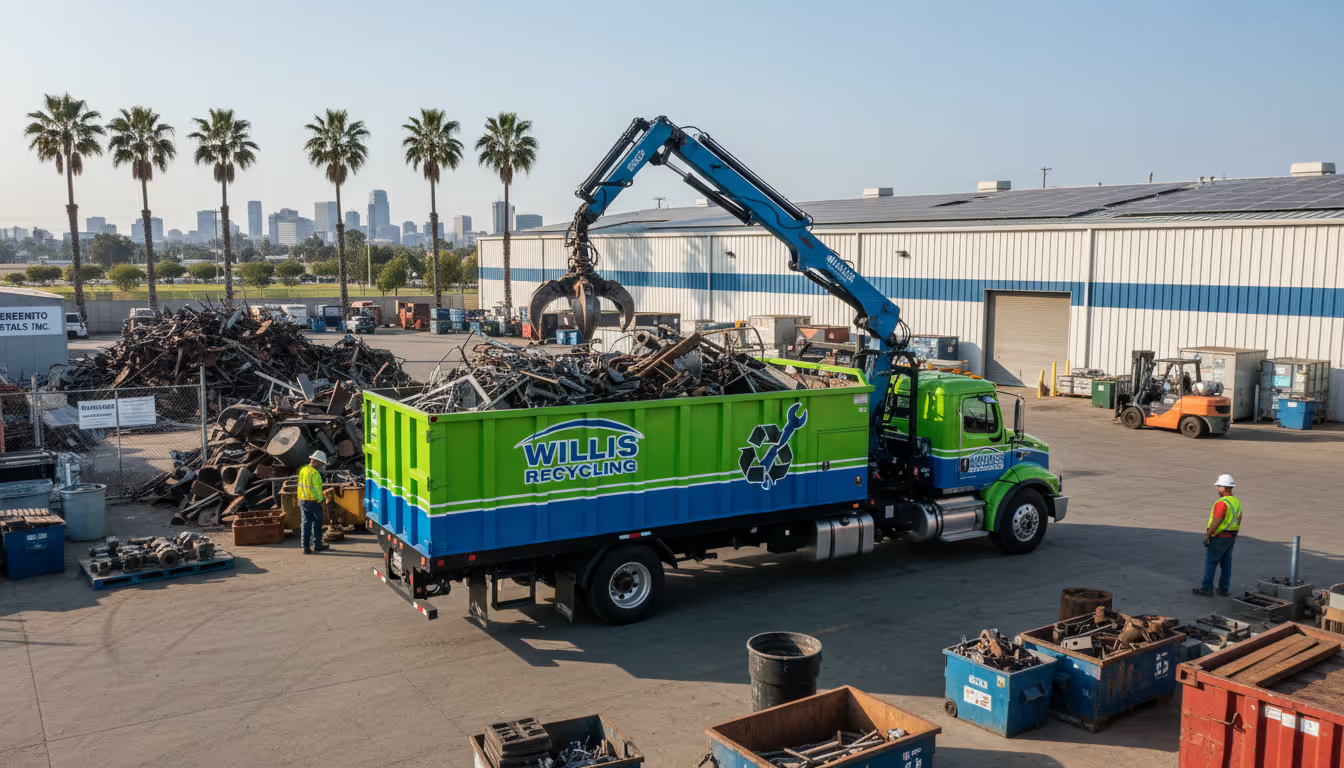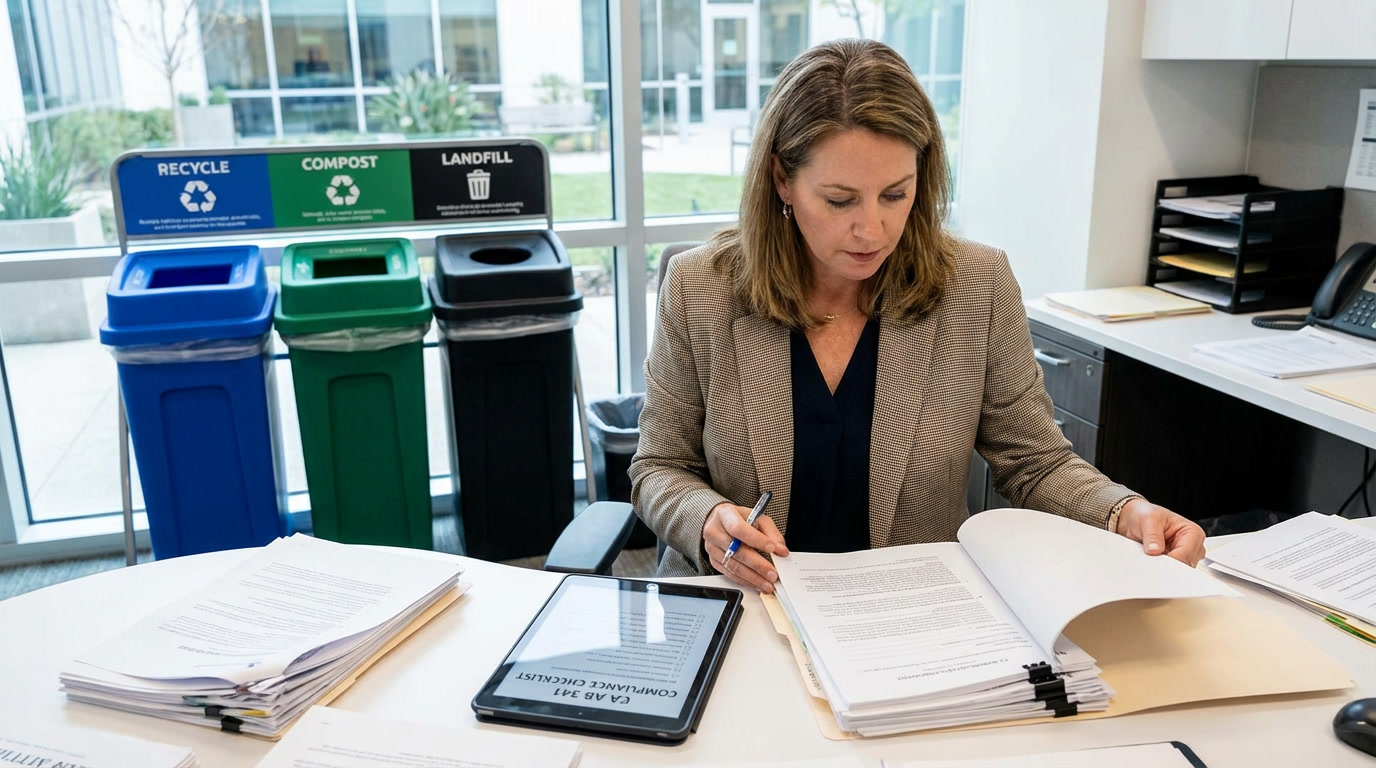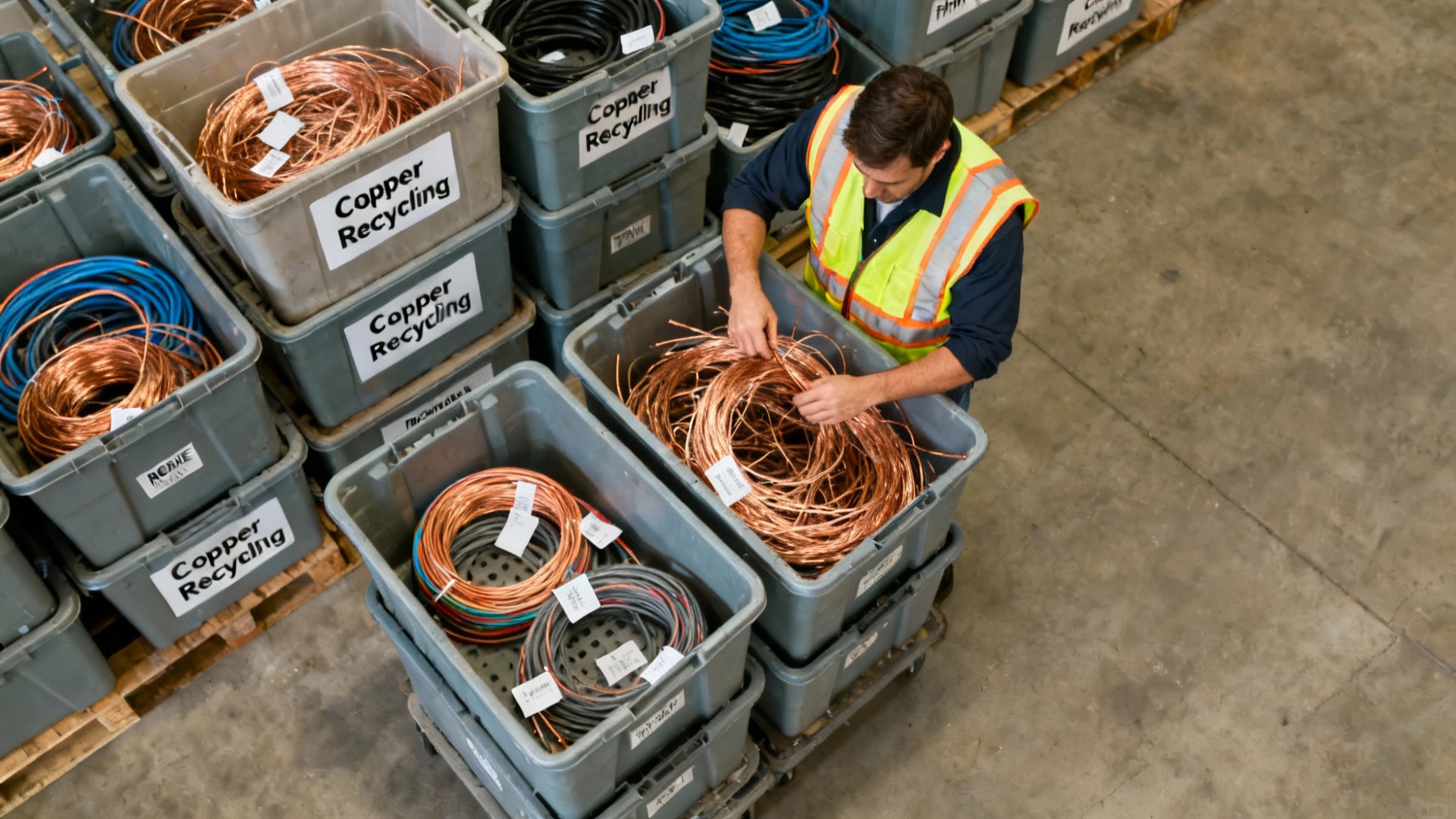Featured Snippet
Recycling cuts your company's carbon footprint through energy savings and reduced emissions. Aluminum recycling saves 95% of production energy. Steel recycling saves 60-74%. Every ton of recycled materials prevents multiple tons of CO2 emissions. A comprehensive recycling program directly supports ESG goals while potentially reducing disposal costs.
The Bottom Line
Want the quick version? Here's what Sacramento businesses need to know: Implementing a comprehensive recycling program can reduce your carbon emissions by 50-70% compared to landfilling. Partner with a mobile recycling service, track your materials, and watch your carbon footprint shrink while meeting ESG requirements.
Why Your Recycling Decisions Matter Right Now
Picture this: Your Sacramento construction site just finished a major project. Tons of scrap metal sit in containers. Your next decision—recycle or landfill—will either release or prevent the equivalent emissions of dozens of cars driving for a year.
This isn't hyperbole. It's math.
Every business in California faces growing pressure to reduce emissions. New regulations arrive yearly. Investors demand ESG metrics. Customers expect environmental responsibility.
Good news: Recycling offers the simplest path to meaningful carbon reduction. No complex technology. No massive investment. Just smart waste management that transforms your scrap into environmental wins.
The Numbers That Matter: Carbon Savings by Material
Different materials deliver different impacts. Understanding these differences helps you prioritize your recycling efforts for maximum carbon reduction.
Aluminum: Your Carbon-Cutting Champion
Aluminum recycling delivers extraordinary results:
Energy saved: 95% versus new production [1]
CO2 prevented: 9 tons per ton recycled [2]
Real-world impact: One recycled aluminum can saves enough energy to run a laptop for 3 hours
For businesses handling HVAC components, electrical systems, or aluminum siding, these savings multiply quickly. A typical construction project recycling 5 tons of aluminum prevents 45 tons of CO2—equal to a passenger car driving 112,500 miles.
Steel: Heavy Weight, Light Footprint
Steel recycling creates substantial environmental benefits:
Energy reduction: 60-74% compared to virgin steel [3]
CO2 savings: 1.8 tons per ton recycled
Resource conservation: Every ton saves 2,500 pounds of iron ore
Construction companies and facilities regularly handle steel beams, rebar, and equipment. Recycling just 10 tons of steel prevents emissions equivalent to powering three homes for a year.
Copper: Valuable in Every Way
Copper recycling delivers both economic and environmental value:
Energy savings: 85% versus mining new copper [4]
Infinite recyclability: No quality loss through repeated recycling
Market demand: High value makes recycling economically attractive
Electrical contractors and plumbers generate significant copper scrap. Every pound recycled is a pound not mined, processed, and transported—each step prevented reduces emissions.
Cardboard: More Than Trees
Cardboard recycling prevents multiple environmental impacts:
Oil saved: 46 gallons per ton [5]
CO2 prevented: 1 ton per ton recycled
Methane reduction: Prevents landfill decomposition emissions
Hospitals, retailers, and distribution centers generate massive cardboard volumes. Baling and recycling this material creates immediate carbon benefits while reducing disposal costs.
Making It Work: Your Implementation Roadmap
Step 1: Assess Your Waste Stream
Start simple. For one week, track what goes in your dumpsters:
Metal types and volumes
Cardboard quantities
Electronic equipment
Construction materials
This baseline reveals your biggest opportunities for carbon reduction through recycling.
Step 2: Choose the Right Partner
Mobile recycling services eliminate common barriers:
No transportation hassles—they come to you
Flexible scheduling—works around your operations
Proper documentation—essential for ESG reporting
Expert sorting—maximizes material value
Willis Recycling's mobile services throughout Sacramento make implementation straightforward. One call starts your carbon reduction journey.
Step 3: Set Up Your System
Create designated collection areas:
Metal bins near work zones
Cardboard balers in receiving areas
Clear signage showing what goes where
Regular pickup schedule preventing overflow
Simple systems get followed. Complex systems get ignored.
Step 4: Track and Report Your Impact
Document everything for ESG reporting:
Material types and weights
Pickup frequency
Calculated emissions reductions
Cost savings achieved
Many companies discover recycling generates revenue while reducing emissions—a rare win-win in sustainability efforts.
Real Results: What to Expect
Let's calculate potential impact for a typical Sacramento business:
Medium Construction Company Example:
15 tons steel recycled monthly = 27 tons CO2 saved
5 tons aluminum recycled monthly = 45 tons CO2 saved
10 tons cardboard recycled monthly = 10 tons CO2 saved
Monthly total: 82 tons CO2 prevented Annual impact: 984 tons CO2—equivalent to removing 213 cars from roads [6]
These aren't theoretical numbers. They're achievable results from standard recycling practices.
Connecting to Your ESG Goals
Environmental Metrics
Recycling directly improves key environmental indicators:
Scope 3 emissions reduction
Resource efficiency scores
Waste diversion rates
Circular economy participation
Social Responsibility
Your recycling program demonstrates community commitment:
Local job support in recycling industry
Reduced environmental burden on neighborhoods
Visible sustainability leadership
Employee pride in green initiatives
Governance Excellence
Proper recycling shows proactive compliance:
Meets California regulations
Exceeds minimum requirements
Provides audit documentation
Demonstrates risk management
Common Questions, Straight Answers
"How much time does this really take?" Initial setup: 2-3 hours. Ongoing management: 30 minutes weekly. The mobile recycling service handles the heavy lifting.
"What if we don't generate enough volume?" Even small businesses benefit. Storing materials until you have full loads maximizes efficiency and revenue.
"How do we ensure employee participation?" Share the numbers. When crews understand that recycling one aluminum beam saves enough energy to power their phones for a month, participation improves.
"Can we really track carbon savings accurately?" Yes. EPA conversion factors provide reliable calculations. Your recycling partner should provide regular impact reports.
Your Next Steps
California businesses lead the nation in environmental responsibility. Your recycling decisions today shape tomorrow's climate impact. The ecosystem of businesses, recycling facilities, and manufacturers working together creates exponential benefits.
Ready to reduce your carbon footprint through strategic recycling? Here's how to start:
Call Willis Recycling at (916) 271-2691 for a free on-site evaluation
Identify your highest-volume recyclable materials
Implement simple collection systems
Track your environmental impact
Report your success in ESG documentation
Every ton recycled is progress. Every business participating strengthens the recycling ecosystem. Together, we're reducing California's carbon footprint—one scrap metal load at a time.
Citations
[1] The Aluminum Association. "Sustainability - Aluminum Recycling." aluminum.org, 2024. https://www.aluminum.org/sustainability/aluminum-recycling
[2] International Aluminium Institute. "Recycling." international-aluminium.org, 2024. https://international-aluminium.org/resource/aluminium-recycling-fact-sheet/
[3] U.S. Environmental Protection Agency. "Recycling Economic Information (REI) Report." epa.gov, 2023. https://www.epa.gov/facts-and-figures-about-materials-waste-and-recycling
[4] Copper Development Association. "Copper Recycling and Sustainability." copper.org, 2024. https://www.copper.org/environment/lifecycle/recycling.html
[5] U.S. Environmental Protection Agency. "Paper and Paperboard: Material-Specific Data." epa.gov, 2023. https://www.epa.gov/facts-and-figures-about-materials-waste-and-recycling/paper-and-paperboard-material-specific-data
[6] U.S. Environmental Protection Agency. "Greenhouse Gas Equivalencies Calculator." epa.gov, 2024. https://www.epa.gov/energy/greenhouse-gas-equivalencies-calculator



